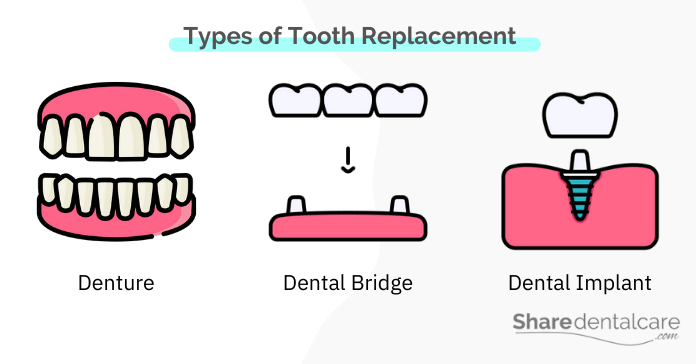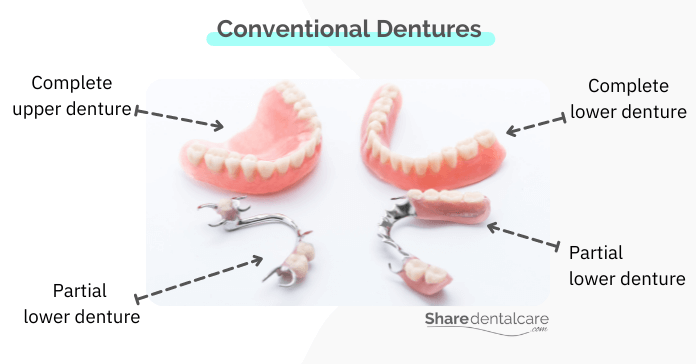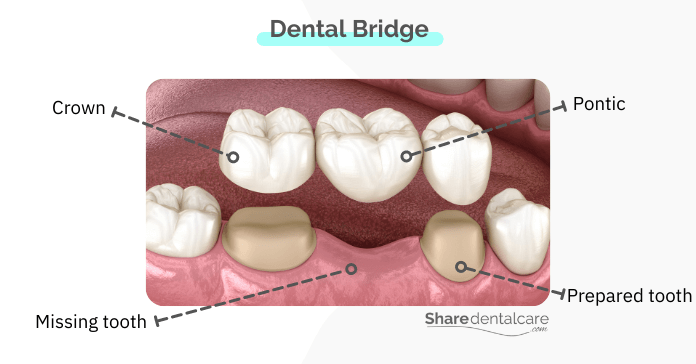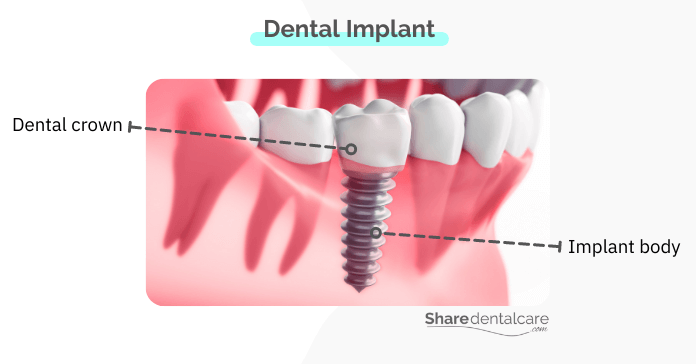Tooth loss is a very common problem nowadays. Missing teeth can cause problems with eating and speech as well. Having healthy teeth is very important for your overall health, smile, and self-confidence. So, different types of tooth replacements exist for you to have a healthy smile again. The three major options available today include dentures, dental bridges, and implants. Choosing between these different types can be a difficult decision to make. So, we will discuss the different types of tooth replacement, and the pros & cons of each one.
Why Are Your Teeth Important?
One of the main functions of teeth is to chew food which breaks it down into smaller pieces. Foods are easier to digest when they are broken down properly. Teeth also help us to speak clearly because they help to form words and make it easier to pronounce certain sounds. Teeth give us a beautiful smile which helps us to form personal relationships.
Without teeth, many tasks would be difficult if not impossible to accomplish, and as a result, our quality of life would be highly compromised. Tooth loss affects one’s appearance, self-esteem, and ability to chew food. So, many people want to replace missing teeth and restore their smiles. You can restore your smile and chewing function with these different types of tooth replacement.
3 Types of Tooth Replacement Options You Can Choose From
There are several dental treatments available to replace missing teeth. Choosing between the different types of tooth replacement depends on several factors, such as the number and location of missing teeth, the cause of tooth loss, and the final cost. These factors must be considered before choosing the suitable option for you.

Conventional Dentures
Conventional dentures are removable prostheses to replace missing teeth. Dentures are usually made of an acrylic base and artificial teeth. Today, dentures are the least common compared to the other types of tooth replacement because they are removable, not strong enough to support eating and speaking, and need to be replaced every 7-10 years. There are two types of conventional dentures; partial dentures and complete dentures. Partial dentures are used to replace a few missing teeth, for example, a partial denture for 1 tooth, while complete dentures are used to replace all teeth. Read more about partial dentures for molars.
Advantages of Conventional Dentures
- Conventional dentures are an affordable treatment option compared to other types of tooth replacement.
- Provide acceptable function and a natural appearance of teeth.
- Preparation doesn’t require anesthesia, tooth preparation, or surgery. They are less invasive than other types of tooth replacement.
- Can be removed for cleaning and maintenance, in comparison with other types of tooth replacement.
- Suitable for patients with complete tooth loss (edentulous patients). Read more about the treatment options for adults with no teeth.
Disadvantages of Conventional Dentures
- They are removable.
- Patients experience some degree of discomfort while speaking and eating because conventional dentures do not provide the amount of support needed for these activities.
- Some patients experience sore spots and irritation of tissue at the gum line where it sits all day.
- Inability to allow chewing hard and sticky foods.
- It may take a while to become accustomed to their use and feel in your mouth.
- Need to be relined every 3-5 years.
- Conventional dentures don’t last forever because they need to be replaced every 7 – 10 years.

Dental Bridges
Dental bridges are fixed prostheses that are used to replace one or more missing teeth. They are a popular type of tooth replacement. Bridges depend on the neighboring natural teeth for support. They are used to replace missing teeth between two neighboring teeth on the same arch. Other types of tooth replacement usually don’t require support from neighboring teeth. Dental bridges can be made from different materials such as gold or porcelain fused to metal or zirconia. Learn more about the bridge types in dentistry.
Advantages of Dental Bridges
- They are fixed, providing better support for chewing and speaking.
- Bridges are durable and long-lasting.
- The neighboring natural teeth provide support for the dental bridge.
- The aesthetic appearance of dental bridges is nearly as good as natural teeth.
Disadvantages of Dental Bridges
- They are relatively expensive. The cost depends on the type of material used, the number of teeth included in the restoration, and your location.
- The neighboring natural teeth could be damaged because they carry a greater amount of force when eating compared to other types of tooth replacement options.
- Bridges cannot be removed for cleaning and maintenance.
- Dental bridges need to be replaced every 10 – 20 years depending on the material used, chewing pattern, and oral hygiene routine.

Dental Implants: The Best Option Compared to Other Types of Tooth Replacement
Dental implants are used to replace single or multiple missing teeth. A dental implant is a prosthetic device implanted in the jawbone beneath the gums. It imitates the root structure of natural teeth and provides a secure foundation for prostheses such as crowns, bridges, and dentures. Dental implants are a popular choice over other types of tooth replacement because they provide stability, durability, stimulate bone growth, and allow the teeth to function as they did before.
Advantages of Dental Implants
- They are very durable and last for a lifetime.
- The bone tissue will grow around the dental implant securing it in place. They provide good support when eating or speaking.
- A better aesthetic appearance than most other types of tooth replacement makes them a popular choice among patients with missing teeth.
- Dental implants do not require the use of neighboring teeth for support. They are more stable than other types of tooth replacement.
- Ability to chew anything because they are placed directly into the jawbone.
- The chewing force is distributed evenly throughout the jawbone, minimizing wear and tear compared to other tooth replacement options.
Disadvantages of Dental Implants
- Dental implants are expensive. The cost depends on the size, location, and the number of teeth required for replacement.
- The placement of dental implants requires a surgical procedure.
- The surgical procedure takes time and is more complicated than other types of tooth replacement options. The entire process from bone grafting to placement can take several months or a year to complete.
- They have a higher risk for complications such as implant loosening, infection, and jawbone damage.

Types of Tooth Replacement – Conclusion
If you have a missing tooth or teeth, there are 3 types of tooth replacement you can choose from. Conventional dentures are an affordable option but removable. So, you may experience some discomfort while eating or speaking. Dental Bridges are more stable and durable than dentures. However, they require the reduction of the adjacent sound teeth for support.
Dental implants are the best treatment option because they are durable and long-lasting compared to dentures and implants. However, they are more expensive and require a surgical procedure. Each type of tooth replacement has advantages and disadvantages. So, consult your dentist to find out which option is suitable for your needs.